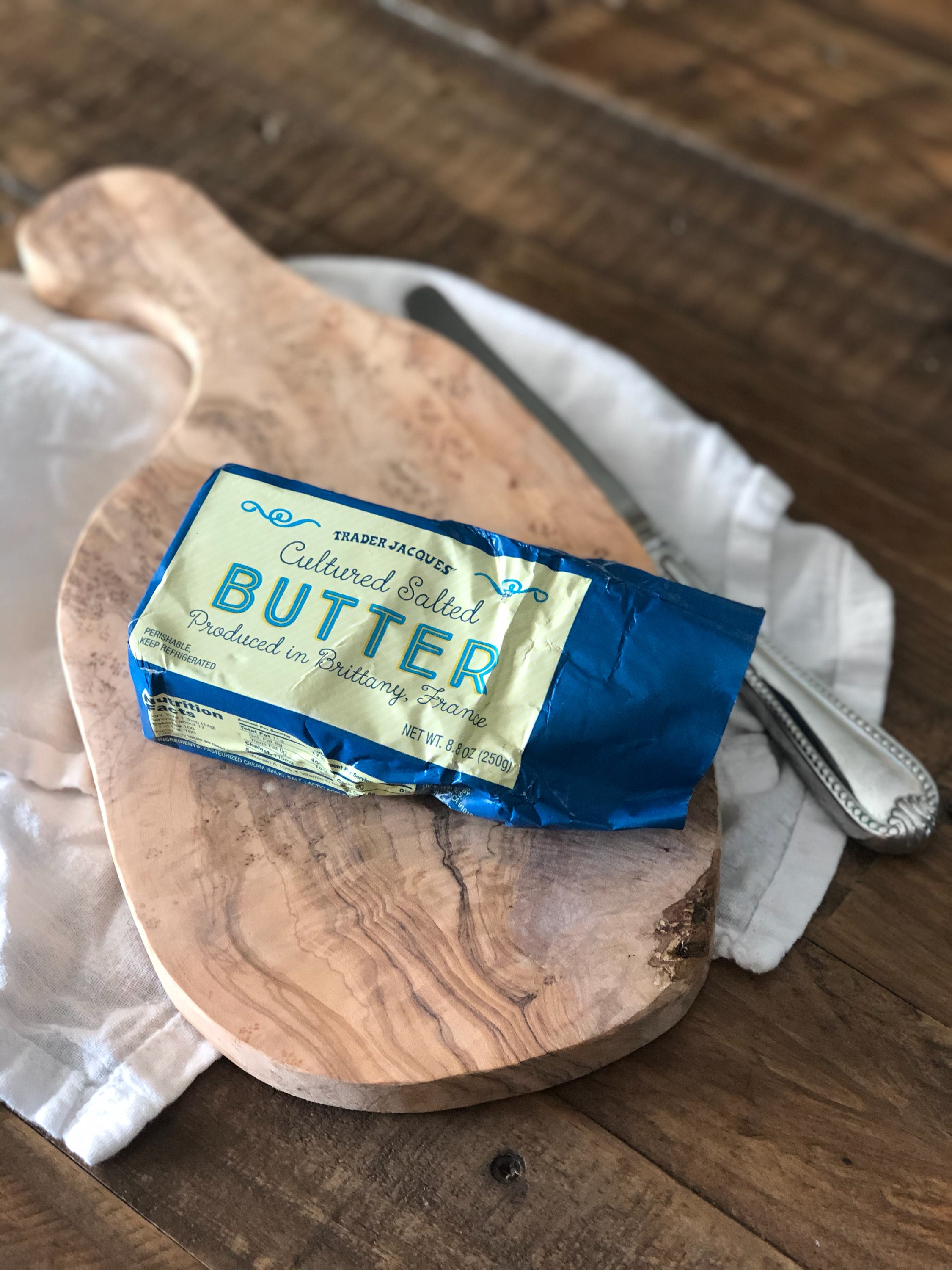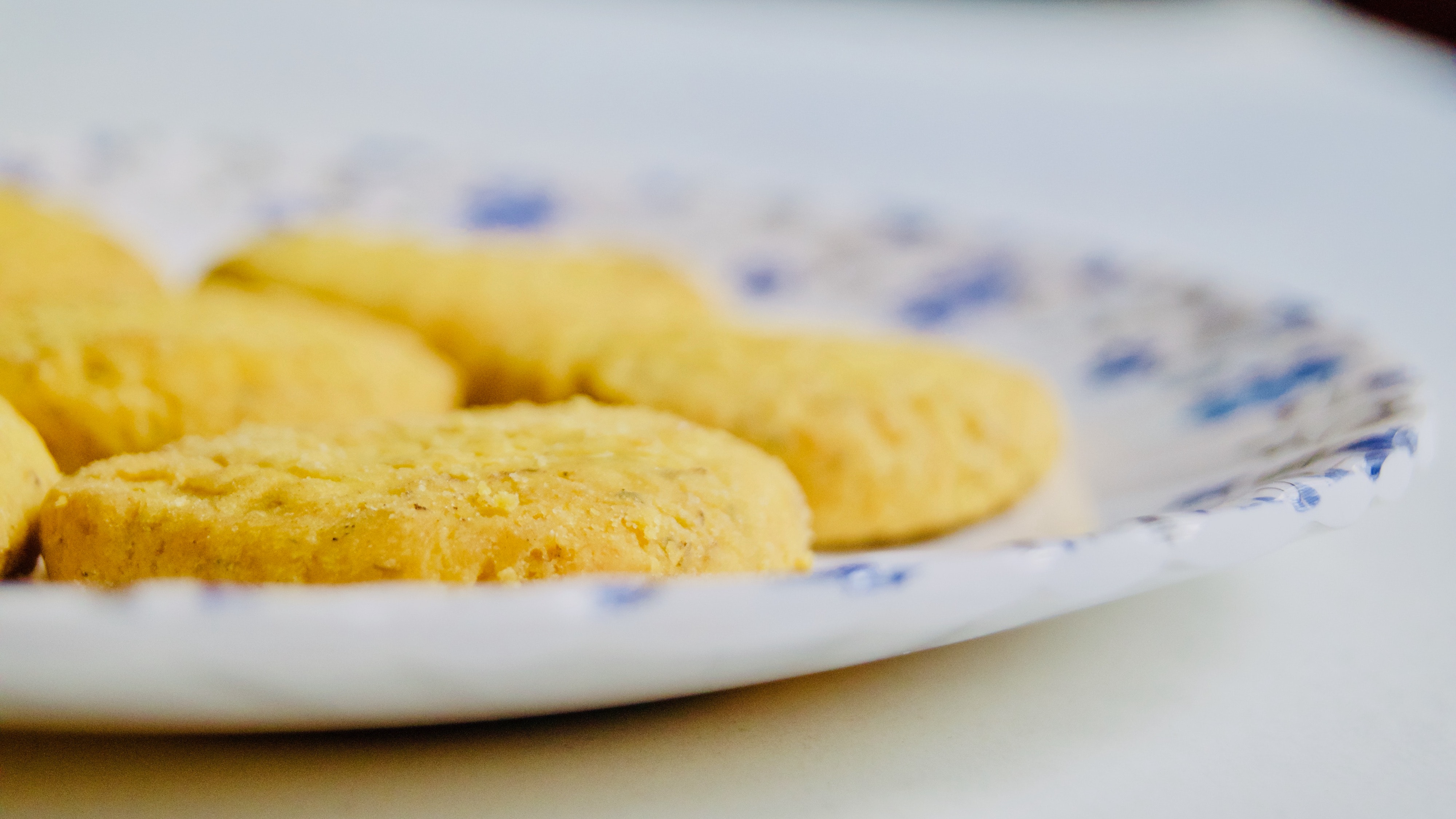Have You Tried Cultured Butter?
As I have been getting into eating more and more cultured (aka fermented) foods, the one thing I kept reading about, especially in the comment sections of different articles, was how delicious cultured butter is. It has got a little bit more tang and flavor than regular butter, but in all the good ways. And of course because it is cultured it has many more health benefits than regular butter.

What is Cultured Butter?
You might be wondering what in the world cultured butter means? I wondered too. One funny commenter said, “What does cultured mean? Do I take it to the opera? Expose it to ballet on PBS? Teach it French?” :)
According to Dorie Greenspan in her Short Stack Book, Butter, “with this kind of butter, the cream is treated with cultures (like yogurt), allowed to ferment and then churned. The result is a fuller flavor with noticeable acidity.” People often describe it as having a complex tang to it.

Some of the health benefits of cultured butter are:
Have you used cultured butter before? Or is it something you think you’d try? Maybe you can at least pick up a pound of cultured butter to make these delicious cultured butter cookies down below. You’ll be so happy you did!

250 grams all-purpose flour (2 cups)
3 grams baking powder (1/2 teaspoon)
1/4 teaspoon fine sea salt
2 sticks salted, cultured butter, at room temperature (1 cup)
130 grams granulated sugar (2/3 cup)
1 large egg yolk
55 grams demerara sugar, for rolling (1/4 cup)
Directions:

What is Cultured Butter?
You might be wondering what in the world cultured butter means? I wondered too. One funny commenter said, “What does cultured mean? Do I take it to the opera? Expose it to ballet on PBS? Teach it French?” :)
According to Dorie Greenspan in her Short Stack Book, Butter, “with this kind of butter, the cream is treated with cultures (like yogurt), allowed to ferment and then churned. The result is a fuller flavor with noticeable acidity.” People often describe it as having a complex tang to it.
- Cultured butter is higher in fat than regular butter (82 to 86 versus 80 percent), which makes it far better for baking and more pliant for spreading.
- It can have different flavor profiles from one batch to the next, depending on how and what it is made with--cheesy and tart, creamy and sweet, herbal, vegetable, too salty, not salty enough, etc.

Some of the health benefits of cultured butter are:
- Trace minerals: Manganese, Zinc, Chromium, Selenium, and Iodine; all in a highly absorbable form.
- Cultured or fermented dairy products contain lactic acid-producing bacteria that begin to break down both lactose (milk sugars) and casein (milk proteins), which aids in digestion. Both of these are difficult for us to digest and can lead to intestinal damage.
- This helpful bacteria helps strengthen our immune system, keeps pathogenic bacteria from producing and helps digest our food.
- Both vitamins B and C are higher in cultured dairy products.
Have you used cultured butter before? Or is it something you think you’d try? Maybe you can at least pick up a pound of cultured butter to make these delicious cultured butter cookies down below. You’ll be so happy you did!

Cultured Butter Cookies
These cookies are crumblier, crisper and more buttery in flavor than the typical cookie made with high-fat sweet cream butter. Which is exactly why you should make them. Author: Melissa Clark
Yield: 5 dozen small cookies
Serving size: 5
Calories per serving: 0
Ingredients:
Serving size: 5
Calories per serving: 0
250 grams all-purpose flour (2 cups)
3 grams baking powder (1/2 teaspoon)
1/4 teaspoon fine sea salt
2 sticks salted, cultured butter, at room temperature (1 cup)
130 grams granulated sugar (2/3 cup)
1 large egg yolk
55 grams demerara sugar, for rolling (1/4 cup)
Directions:
In a large bowl, sift together flour, baking powder and salt.
In an electric mixer fitted with the paddle attachment, beat together butter and granulated sugar until lightened in color and fluffy; beat in egg yolk until combined. With mixer running on low, add flour mixture until incorporated.
Divide dough into two balls. On a clean surface, roll each ball into a 1 1/2-inch log. Sprinkle the demerara sugar over a sheet of parchment. Roll each log in the sugar until the outside of the dough is thoroughly covered. Cover logs tightly with plastic wrap and refrigerate at least one hour, or overnight.
When you are ready to bake the cookies, heat oven to 325 degrees. Line two baking sheets with parchment. Use large, sharp knife to cut each log into 1/4-inch-thick rounds. Place cookies 1 inch apart on prepared baking sheets. Bake until cookie edges and bottoms are dark golden brown, about 18 minutes. Cool 5 minutes on baking sheets, then transfer to a wire rack to cool completely. Store in a tightly covered container at room temperature.
Source: cooking.nytimes.com
In an electric mixer fitted with the paddle attachment, beat together butter and granulated sugar until lightened in color and fluffy; beat in egg yolk until combined. With mixer running on low, add flour mixture until incorporated.
Divide dough into two balls. On a clean surface, roll each ball into a 1 1/2-inch log. Sprinkle the demerara sugar over a sheet of parchment. Roll each log in the sugar until the outside of the dough is thoroughly covered. Cover logs tightly with plastic wrap and refrigerate at least one hour, or overnight.
When you are ready to bake the cookies, heat oven to 325 degrees. Line two baking sheets with parchment. Use large, sharp knife to cut each log into 1/4-inch-thick rounds. Place cookies 1 inch apart on prepared baking sheets. Bake until cookie edges and bottoms are dark golden brown, about 18 minutes. Cool 5 minutes on baking sheets, then transfer to a wire rack to cool completely. Store in a tightly covered container at room temperature.
Source: cooking.nytimes.com
Recipe formatted with the Cook'n Recipe Software from DVO Enterprises.
Sources:
- www.reallifeofpie.com
- www.pexels.com
- www.cooking.nytimes.com
 Mary Richardson
Mary Richardson
Weekly Newsletter Contributor since 2014
Email the author! mary@dvo.com
